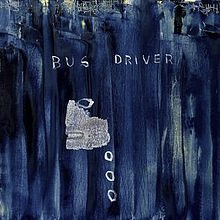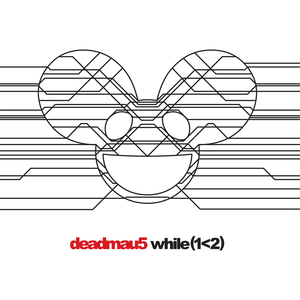
This week I am listening to “Futurology” by Manic Street Preachers
Somebody needs to think about this stuff...
by justin

This week I am listening to “Futurology” by Manic Street Preachers
by justin
Today I finished reading “Trust Me, I’m Lying: Confessions of a Media Manipulator” by Ryan Holiday
by justin
Today I read a paper titled “Algorithms for two variants of Satisfaction Approval Voting”
The abstract is:
Multi-winner voting rules based on approval ballots have received increased attention in recent years.
In particular Satisfaction Approval Voting (SAV) and its variants have been proposed.
In this note, we show that the winning set can be determined in polynomial time for two prominent and natural variants of SAV.
We thank Arkadii Slinko for suggesting these problems in a talk at the Workshop on Challenges in Algorithmic Social Choice, Bad Belzig, October 11, 2014.
by justin
Today I finished reading “Android Game Programming by Example” by John Horton
by justin
Today I read a paper titled “Immersive and Collaborative Data Visualization Using Virtual Reality Platforms”
The abstract is:
Effective data visualization is a key part of the discovery process in the era of big data.
It is the bridge between the quantitative content of the data and human intuition, and thus an essential component of the scientific path from data into knowledge and understanding.
Visualization is also essential in the data mining process, directing the choice of the applicable algorithms, and in helping to identify and remove bad data from the analysis.
However, a high complexity or a high dimensionality of modern data sets represents a critical obstacle.
How do we visualize interesting structures and patterns that may exist in hyper-dimensional data spaces? A better understanding of how we can perceive and interact with multi dimensional information poses some deep questions in the field of cognition technology and human computer interaction.
To this effect, we are exploring the use of immersive virtual reality platforms for scientific data visualization, both as software and inexpensive commodity hardware.
These potentially powerful and innovative tools for multi dimensional data visualization can also provide an easy and natural path to a collaborative data visualization and exploration, where scientists can interact with their data and their colleagues in the same visual space.
Immersion provides benefits beyond the traditional desktop visualization tools: it leads to a demonstrably better perception of a datascape geometry, more intuitive data understanding, and a better retention of the perceived relationships in the data.
by justin
Today I finished reading “The $100 Startup: Reinvent the Way You Make a Living, Do What You Love, and Create a New Future” by Chris Guillebeau
by justin
Today I finished reading “Sales and Marketing Success: Targeting Your Perfect Customer Who Will Buy & Buy” by Rebekah Welch
by justin
Today I read a paper titled “A Self-Supervised Terrain Roughness Estimator for Off-Road Autonomous Driving”
The abstract is:
We present a machine learning approach for estimating the second derivative of a drivable surface, its roughness.
Robot perception generally focuses on the first derivative, obstacle detection.
However, the second derivative is also important due to its direct relation (with speed) to the shock the vehicle experiences.
Knowing the second derivative allows a vehicle to slow down in advance of rough terrain.
Estimating the second derivative is challenging due to uncertainty.
For example, at range, laser readings may be so sparse that significant information about the surface is missing.
Also, a high degree of precision is required in projecting laser readings.
This precision may be unavailable due to latency or error in the pose estimation. We model these sources of error as a multivariate polynomial.
Its coefficients are learned using the shock data as ground truth — the accelerometers are used to train the lasers.
The resulting classifier operates on individual laser readings from a road surface described by a 3D point cloud.
The classifier identifies sections of road where the second derivative is likely to be large.
Thus, the vehicle can slow down in advance, reducing the shock it experiences.
The algorithm is an evolution of one we used in the 2005 DARPA Grand Challenge.
We analyze it using data from that route.
by justin
Today I finished reading “The Ultimate Beginners Guide to Outsourcing” by George Ilian
by justin

This week I am listening to “Metamodern Sounds In Country Music” by Sturgill Simpson
by justin
Social media is an interesting phenomenon.
People are so desperate for validation and feedback from complete strangers they are willing to let others act in a vile or openly hostile manner towards them just to get a like or a comment.
If I comment on a LinkedIn status update (a professional networking website where stirring the pot is a taboo and swearing is looked down upon) and it is left to stand, it tells me one of two things: The person isn’t paying attention or they don’t care (same thing really).
Or my comment is more valuable than their integrity.
Would they rather let something stand that they disagree with and don’t want to see, but be validated by it, than to take action and delete the comment?
P.S. I actively delete (some) comments from my social media posts because I’d rather have no comments than put up with someone’s inane blithering.
by justin
Today I read a paper titled “Equitable Partitioning Policies for Mobile Robotic Networks”
How can you not like a paper that exploits the usefulness of the classic Lloyd algorithm.
The abstract is:
The most widely applied strategy for workload sharing is to equalize the workload assigned to each resource.
In mobile multi-agent systems, this principle directly leads to equitable partitioning policies in which (i) the workspace is divided into subregions of equal measure, (ii) there is a bijective correspondence between agents and subregions, and (iii) each agent is responsible for service requests originating within its own subregion.
In this paper, we design provably correct, spatially-distributed and adaptive policies that allow a team of agents to achieve a convex and equitable partition of a convex workspace, where each subregion has the same measure.
We also consider the issue of achieving convex and equitable partitions where subregions have shapes similar to those of regular polygons.
Our approach is related to the classic Lloyd algorithm, and exploits the unique features of power diagrams.
We discuss possible applications to routing of vehicles in stochastic and dynamic environments.
Simulation results are presented and discussed.
by justin
Today I read a paper titled “Various Types of Aesthetic Curves”
The abstract is:
The research on developing planar curves to produce visually pleasing products (ranges from electric appliances to car body design) and indentifying/modifying planar curves for special purposes namely for railway design, highway design and robot trajectories have been progressing since 1970s.
The pattern of research in this field of study has branched to five major groups namely curve synthesis, fairing process, improvement in control of natural spiral, construction of new type of planar curves and, natural spiral fitting & approximation techniques.
The purpose of is this paper is to briefly review recent progresses in Computer Aided Geometric Design (CAGD) focusing on the topics states above.
by justin
Today I read a paper titled “Vibrotactile Stimulus Frequency Optimization for the Haptic BCI Prototype”
The abstract is:
The paper presents results from a psychophysical study conducted to optimize vibrotactile stimuli delivered to subject finger tips in order to evoke the somatosensory responses to be utilized next in a haptic brain computer interface (hBCI) paradigm.
We also present the preliminary EEG evoked responses for the chosen stimulating frequency.
The obtained results confirm our hypothesis that the hBCI paradigm concept is valid and it will allow for rapid stimuli presentation in order to improve information-transfer-rate (ITR) of the BCI.
by justin
Today I finished reading “Business Doctors: Management Consulting Gone Wild” by Sameer Kamat
by justin
This month I am studying “Baking Mastery – Asian cuisine”
Second month of studying Asian cuisine.
Update: Korean, Thai and Indian.
Update: Also… curry. Lots of curry.
Update #2: I think I am starting to sweat curry.
Update #3: Heavy month. 73 hours in the kitchen. A lot of recipes I never tried before.
by justin

This week I am listening to “The Endless River” by Pink Floyd
by justin
Informing me that what I do “isn’t real woodworking” because I use power tools is the equivalent of telling me that what I do “isn’t real programming” because I use a compiler.
by justin
Today I read a paper titled “On the Covariance of ICP-based Scan-matching Techniques”
The abstract is:
This paper considers the problem of estimating the covariance of roto-translations computed by the Iterative Closest Point (ICP) algorithm.
The problem is relevant for localization of mobile robots and vehicles equipped with depth-sensing cameras (e.g., Kinect) or Lidar (e.g., Velodyne).
The closed-form formulas for covariance proposed in previous literature generally build upon the fact that the solution to ICP is obtained by minimizing a linear least-squares problem.
In this paper, we show this approach needs caution because the rematching step of the algorithm is not explicitly accounted for, and applying it to the point-to-point version of ICP leads to completely erroneous covariances.
We then provide a formal mathematical proof why the approach is valid in the point-to-plane version of ICP, which validates the intuition and experimental results of practitioners.
by justin
Today I read a paper titled “On the Dynamics of Human Proximity for Data Diffusion in Ad-Hoc Networks”
The abstract is:
We report on a data-driven investigation aimed at understanding the dynamics of message spreading in a real-world dynamical network of human proximity.
We use data collected by means of a proximity-sensing network of wearable sensors that we deployed at three different social gatherings, simultaneously involving several hundred individuals.
We simulate a message spreading process over the recorded proximity network, focusing on both the topological and the temporal properties.
We show that by using an appropriate technique to deal with the temporal heterogeneity of proximity events, a universal statistical pattern emerges for the delivery times of messages, robust across all the data sets.
Our results are useful to set constraints for generic processes of data dissemination, as well as to validate established models of human mobility and proximity that are frequently used to simulate realistic behaviors.
by justin
Today I read a paper titled “Anatomical Feature-guided Volumetric Registration of Multimodal Prostate MRI”
The abstract is:
Radiological imaging of prostate is becoming more popular among researchers and clinicians in searching for diseases, primarily cancer.
Scans might be acquired at different times, with patient movement between scans, or with different equipment, resulting in multiple datasets that need to be registered.
For this issue, we introduce a registration method using anatomical feature-guided mutual information.
Prostate scans of the same patient taken in three different orientations are first aligned for the accurate detection of anatomical features in 3D.
Then, our pipeline allows for multiple modalities registration through the use of anatomical features, such as the interior urethra of prostate and gland utricle, in a bijective way.
The novelty of this approach is the application of anatomical features as the pre-specified corresponding landmarks for prostate registration.
We evaluate the registration results through both artificial and clinical datasets
Registration accuracy is evaluated by performing statistical analysis of local intensity differences or spatial differences of anatomical landmarks between various MR datasets.
Evaluation results demonstrate that our method statistics-significantly improves the quality of registration.
Although this strategy is tested for MRI-guided brachytherapy, the preliminary results from these experiments suggest that it can be also applied to other settings such as transrectal ultrasound-guided or CT-guided therapy, where the integration of preoperative MRI may have a significant impact upon treatment planning and guidance.
by justin

This week I am listening to “Everything Will Be Alright In The End” by Weezer
by justin
Today I read a paper titled “Adaptive Locomotion of Multibody Snake-like Robot”
The abstract is:
This paper represents an adaptive rhythmic control for a snake-like robot with 25 degrees of freedom.
The adaptive gait control is implemented in algorithmic way in simulation and on a real robot.
We investigated behavioral and energetic properties of this control and a dynamics of different body segments.
It turned out that despite using homogeneous generators, physical constraints have an inhomogeneous impact on neighbor body segments.
By analytical modeling of such dynamics, it may result in heterogeneous coupling of oscillators for a rhythmic control and impact scalability and synchronization effects of gait pattern generators.
by justin
Today I read a paper titled “Automation of Mobile Pick and Place Robotic System for Small Food Industry”
The abstract is:
The use of robotics in food industry is becoming more popular in recent years.
The trend seems to continue as long as the robotics technology meets diverse and challenging needs of the food producers.
Rapid developments in digital computers and control systems technologies have significant impact in robotics like any other engineering fields.
By utilizing new hardware and software tools, design of these complex systems that need strong integration of distinct disciplines is no longer difficult compared to the past.
Therefore, the purpose of this paper is to design and implement a micro-controller based on reliable and high performance robotic system for food / biscuit manufacturing line.
We propose a design of a vehicle.
The robot is capable of picking unbaked biscuits tray and places them into furnace and then after baking it picks the biscuits tray from the furnace.
A special gripper is designed to pick and place the biscuits tray with flexibility.
by justin
Today I read a paper titled “Dynamical issues in interactive representation of physical objects”
The abstract is:
The quality of a simulator equipped with a haptic interface is given by the dynamical properties of its components: haptic interface, simulator and control system.
Some application areas of such kind of simulator like musical synthesis, animation or more general, instrumental art have specific requirements as for the “haptic rendering” of small movements that go beyond the usual haptic interfaces allow.
Object properties variability and different situations of object combination represent important aspects of such type of application which makes that the user can be interested as much in the restitution of certain global properties of an entire object domain as in the restitution of properties that are specific to an isolate object.
In the traditional approaches, the usual criteria are founded on the paradigm of transparency and are related to the impedance error introduced by the technical aspects of the system.
As a general aim, rather than to minimize these effects, we look to characterize them by physical metaphors conferring to haptic medium the role of a tool.
This positioning leads to firstly analyze the natural human object interaction as a simplified evolutive system and then considers its synthesis in the case of the interactive physical simulation.
By means of a frequential method, this approach is presented for some elementary configurations of the simulator
by justin

This week I am listening to “Another Language” by This Will Destroy You
by justin
Today I finished reading “Pearls Falls Fast: A Pearls Before Swine Treasury” by Stephan Pastis
by justin
Today I read a paper titled “Light-field Microscopy with a Consumer Light-field Camera”
The abstract is:
We explore the use of inexpensive consumer light- field camera technology for the purpose of light-field mi- croscopy.
Our experiments are based on the Lytro (first gen- eration) camera.
Unfortunately, the optical systems of the Lytro and those of microscopes are not compatible, lead- ing to a loss of light-field information due to angular and spatial vignetting when directly recording microscopic pic- tures.
We therefore consider an adaptation of the Lytro op- tical system.
We demonstrate that using the Lytro directly as an oc- ular replacement, leads to unacceptable spatial vignetting.
However, we also found a setting that allows the use of the Lytro camera in a virtual imaging mode which prevents the information loss to a large extent.
We analyze the new vir- tual imaging mode and use it in two different setups for im- plementing light-field microscopy using a Lytro camera.
As a practical result, we show that the camera can be used for low magnification work, as e.g. common in quality control, surface characterization, etc.
by justin
Today I read a paper titled “Speech animation using electromagnetic articulography as motion capture data”
The abstract is:
Electromagnetic articulography (EMA) captures the position and orientation of a number of markers, attached to the articulators, during speech.
As such, it performs the same function for speech that conventional motion capture does for full-body movements acquired with optical modalities, a long-time staple technique of the animation industry.
In this paper, EMA data is processed from a motion-capture perspective and applied to the visualization of an existing multimodal corpus of articulatory data, creating a kinematic 3D model of the tongue and teeth by adapting a conventional motion capture based animation paradigm.
This is accomplished using off-the-shelf, open-source software.
Such an animated model can then be easily integrated into multimedia applications as a digital asset, allowing the analysis of speech production in an intuitive and accessible manner.
The processing of the EMA data, its co-registration with 3D data from vocal tract magnetic resonance imaging (MRI) and dental scans, and the modeling workflow are presented in detail, and several issues discussed.
by justin
Today I finished reading “Getting to It: Accomplishing the Important, Handling the Urgent, and Removing the Unnecessary” by Jones Loflin
by justin
Today I read a paper titled “Self-organized adaptation of a simple neural circuit enables complex robot behaviour”
The abstract is:
Controlling sensori-motor systems in higher animals or complex robots is a challenging combinatorial problem, because many sensory signals need to be simultaneously coordinated into a broad behavioural spectrum.
To rapidly interact with the environment, this control needs to be fast and adaptive.
Current robotic solutions operate with limited autonomy and are mostly restricted to few behavioural patterns.
Here we introduce chaos control as a new strategy to generate complex behaviour of an autonomous robot.
In the presented system, 18 sensors drive 18 motors via a simple neural control circuit, thereby generating 11 basic behavioural patterns (e.g., orienting, taxis, self-protection, various gaits) and their combinations.
The control signal quickly and reversibly adapts to new situations and additionally enables learning and synaptic long-term storage of behaviourally useful motor responses.
Thus, such neural control provides a powerful yet simple way to self-organize versatile behaviours in autonomous agents with many degrees of freedom.
by justin

This week I am listening to “Here And Nowhere Else” by Cloud Nothings
by justin
Today I finished reading “Bring Me the Head of Willy the Mailboy!” by Scott Adams
by justin
Watched the Apple keynote yesterday where the Apple iPad Pro was announced. My immediate thought was “Girl, you got fat. Mmm hmm.”
P.S. I never was much good at “Yo Mama” jokes.
by justin
Today I finished reading “Selling Well: The 5 Relationships That Experts, Authors & Coaches Use To Sell 1,000 Books In 21 Days” by Ryan Mendenhall
by justin
Today I read a paper titled “A level-set-based method for fixing overhangs in 3D printing”
The abstract is:
3D printers based on the Fused Decomposition Modeling create objects layer-by-layer dropping fused material
As a consequence, strong overhangs cannot be printed because the new-come material does not find a suitable support over the last deposed layer
In these cases, one can add some support structures (scaffolds) which make the object printable, to be removed at the end
In this paper we propose a level-set method to create object-dependent support structures, specifically conceived to reduce both the amount of additional material and the printing time
We also review some open problems about 3D printing which can be of interests for the mathematical community
by justin
Today I finished reading “The Ocean at the End of the Lane” by Neil Gaiman
by justin
This month I am studying “Baking Mastery – Asian cuisine”
Two months of studying Asian cuisine.
Update: Japanese food and regional Chinese food mostly in the first month. I think they were doing an “introduction” to other cultures.
by justin

This week I am listening to “Songs of Innocence” by U2
by justin
Today I finished reading “New Media Marketing Strategies: Oh The Tangled Web We Weave” by Rebekah Welch
by justin
My wife treats me like a God.
She ignores me and everything I have to say until she wants something.
by justin
Today I read a paper titled “Unit Vector Games”
The abstract is:
McLennan and Tourky (2010) showed that “imitation games” provide a new view of the computation of Nash equilibria of bimatrix games with the Lemke-Howson algorithm
In an imitation game, the payoff matrix of one of the players is the identity matrix
We study the more general “unit vector games”, which are already known, where the payoff matrix of one player is composed of unit vectors
Our main application is a simplification of the construction by Savani and von Stengel (2006) of bimatrix games where two basic equilibrium-finding algorithms take exponentially many steps: the Lemke-Howson algorithm, and support enumeration.
by justin
Today I finished reading “Swords Against Wizardry” by Fritz Leiber
by justin

This week I am listening to “Perfect Hair” by Busdriver
by justin
Only poor people wear brands.
And only the vacuous care about them.
by justin
It’s always amusing to me when someone states “Demographic X knows more about technology Y (usually social media or video games) because they are younger.”
And I think, “Oh really? That’s interesting because whilst I and my colleagues were building and creating technology Y, it appears that demographic X were still, quite literally, shitting in their diaper.”
You might as well be telling me that the youth of today understand and appreciate coffee more for the simple reason is they grew up with a Starbucks on every corner.
You don’t stop understanding technology because you got old.
You stop understanding because you stopped being curious and you stopped learning.
by justin
Today I read a paper titled “Single-Pass GPU-Raycasting for Structured Adaptive Mesh Refinement Data”
The abstract is:
Structured Adaptive Mesh Refinement (SAMR) is a popular numerical technique to study processes with high spatial and temporal dynamic range
It reduces computational requirements by adapting the lattice on which the underlying differential equations are solved to most efficiently represent the solution
Particularly in astrophysics and cosmology such simulations now can capture spatial scales ten orders of magnitude apart and more
The irregular locations and extensions of the refined regions in the SAMR scheme and the fact that different resolution levels partially overlap, poses a challenge for GPU-based direct volume rendering methods
kD-trees have proven to be advantageous to subdivide the data domain into non-overlapping blocks of equally sized cells, optimal for the texture units of current graphics hardware, but previous GPU-supported raycasting approaches for SAMR data using this data structure required a separate rendering pass for each node, preventing the application of many advanced lighting schemes that require simultaneous access to more than one block of cells
In this paper we present a single-pass GPU-raycasting algorithm for SAMR data that is based on a kD-tree
The tree is efficiently encoded by a set of 3D-textures, which allows to adaptively sample complete rays entirely on the GPU without any CPU interaction
We discuss two different data storage strategies to access the grid data on the GPU and apply them to several datasets to prove the benefits of the proposed method
by justin

This week I am listening to “while(1<2)” by deadmau5
by justin
Sat at an outdoor coffee shop working quietly when two children walk up behind me.
Screaming kid and loudly chewing kid start randomly insulting me.
I look at them.
They flip me off.
I look at their Mother who is talking loudly on the phone with “an F this and a n****r that and oh no you didn’t and so I says to her with a mmm hmmm” as her dialect.
The Mother pointedly looks right at me and then right through me.
I go back to work.
Screaming kid stops screaming long enough to start poking at my touch screen.
I slap his hand away and he becomes screaming kid once more.
I look at Mother and she continues to look through me like I don’t exist, yammering away at a hundred miles an hour on her phone.
I open up a web browser while screaming kid tries reaching for the laptop again.
I navigate to PornHub and click on the first free video, unplug my headphones and turn the volume up.
“What is wrong with you?!” shouts the Mother, finally taking notice, “they’re just children.”
And finally she pulls loudly chewing kid and screaming kid away, stomping off to another table.
I go back to my work.
Porn is a far more effective deterrent to badly behaved children than a quiet word with the Mother ever could be.
by justin
Today I finished reading “Swords and Deviltry” by Fritz Leiber